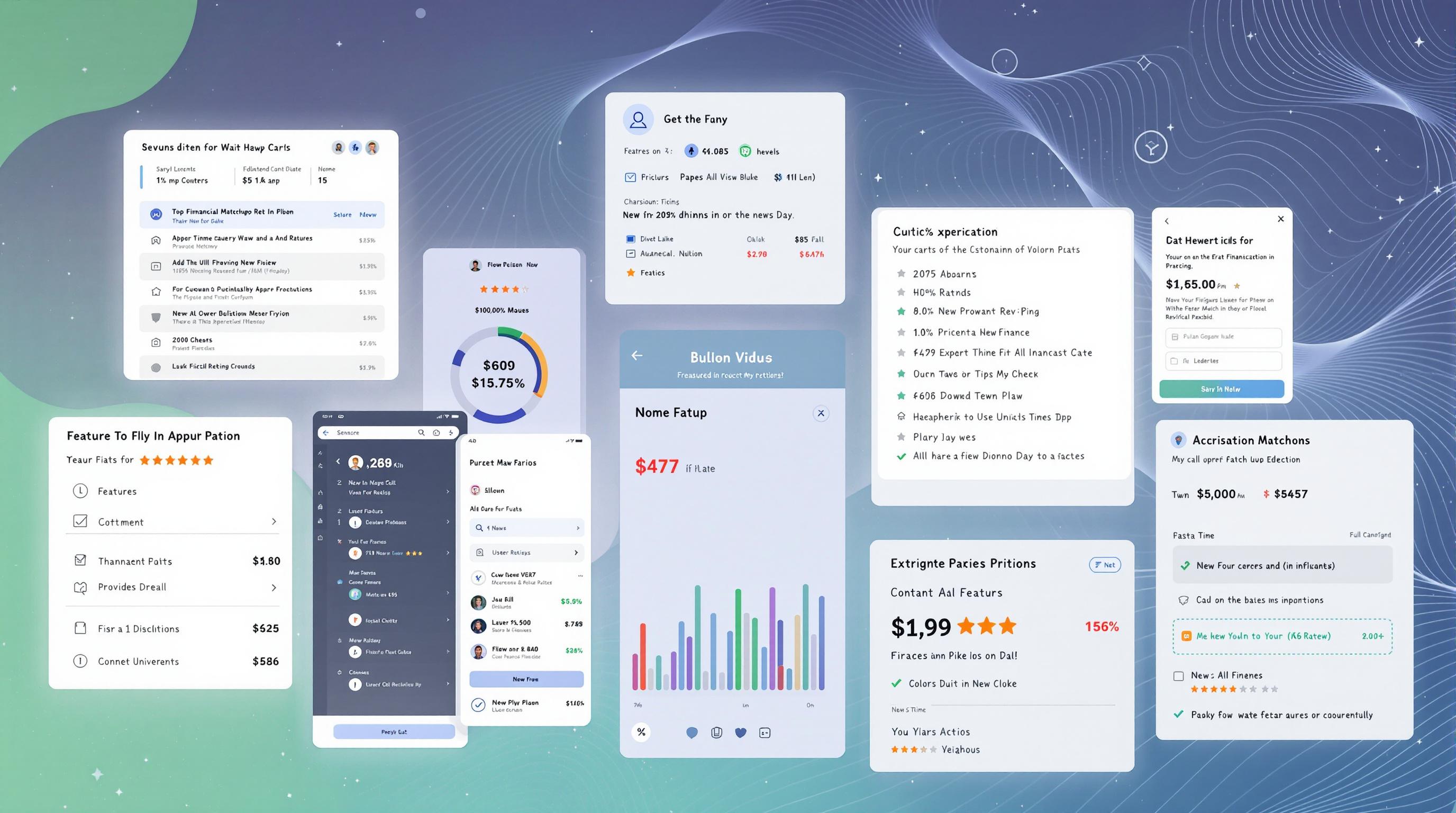Related Articles
- How Mobile Accounting Influences Entrepreneurial Mental Health and Work-Life Balance in Gig Economies
- The Quiet Costs: How Mismanaged Time Data Quietly Undermines Small Business Growth and Decision Making
- Top 5 Trailblazing AI-Powered Financial Reporting Apps Revolutionizing Accuracy and Speed Since 2019
- How Behavioral Economics Shapes Decision-Making in Financial Record Matching and Discrepancy Resolution
- How Subtle Shifts in Supplier Relationships Secretly Affect Your Company's Financial Health and Liquidity Balance
- Top 6 Payroll Solutions Born in the Last Five Years That Are Quietly Taking the Gig Economy by Storm
10 Critical Compliance Pitfalls in Business Account Reconciliation and How to Avoid Costly Regulatory Fines
10 Critical Compliance Pitfalls in Business Account Reconciliation and How to Avoid Costly Regulatory Fines
10 Critical Compliance Pitfalls in Business Account Reconciliation and How to Avoid Costly Regulatory Fines
1. Inadequate Documentation and Record-Keeping
One of the most common compliance pitfalls in business account reconciliation is inadequate documentation and record-keeping. Maintaining comprehensive and accurate records is essential to provide a clear audit trail and demonstrate regulatory compliance. Without proper documentation, discrepancies cannot be effectively resolved, raising red flags during audits.
Businesses often neglect to keep detailed records of adjustments, approvals, and reconciliations, which can lead to misunderstandings and regulatory scrutiny. Ensuring that every transaction is supported by appropriate documentation minimizes the risk of non-compliance.
To avoid fines, implement stringent documentation policies and train staff on maintaining compliant records. Integration of digital record-keeping systems can also enhance traceability and ease of access during regulatory reviews (source: Deloitte, 2023).
2. Failure to Reconcile Accounts Timely
Timeliness is critical in account reconciliation. Delaying reconciliations allows discrepancies to accumulate, increasing the complexity and risk of errors. Regulatory bodies expect businesses to perform reconciliations within prescribed timeframes.
Lack of timely reconciliation can result in missed fraud detection, inaccurate financial reporting, and potential violations of compliance mandates. These issues may trigger costly fines or sanctions from regulatory authorities.
Establishing a fixed schedule for reconciliations, supported by automated reminders and workflow management tools, helps ensure that reconciliations are conducted without delay. Prompt resolution of mismatches reinforces compliance and financial integrity.
3. Ignoring Segregation of Duties
The segregation of duties (SoD) is a fundamental internal control designed to prevent conflicts of interest and fraud during reconciliation processes. When a single individual handles multiple reconciliation-related tasks, the risk of manipulation and error increases.
Failing to implement SoD can lead to regulatory non-compliance and undermine the integrity of reconciled accounts. Auditors often flag inadequate SoD as a critical risk area, potentially resulting in penalties.
To mitigate this risk, businesses should assign different personnel to prepare, review, and approve reconciliations. Leveraging system controls that enforce SoD can further strengthen compliance frameworks.
4. Overlooking Regulation Updates
Regulatory environments are dynamic, and failure to stay abreast of changes can expose businesses to non-compliance risks. Updates to financial reporting standards or sector-specific regulations may alter reconciliation requirements.
Ignoring these developments might result in outdated reconciliation practices that no longer align with current laws, potentially triggering fines or corrective orders. Employees involved in reconciliation must be aware of regulatory evolutions.
Businesses should subscribe to regulatory updates, conduct periodic training, and review reconciliation procedures regularly. Compliance teams play a key role in ensuring that reconciliation processes adapt promptly to new regulations, thus avoiding penalties (source: PwC, 2024).
5. Insufficient Training and Knowledge
Reconciliation staff lacking adequate training are prone to errors and may inadvertently breach compliance requirements. Complex financial regulations and reconciliation techniques require continuous education to maintain proficiency.
Without sufficient knowledge, employees may misinterpret reconciliation policies or overlook critical control steps, leading to compliance gaps and financial discrepancies. These issues increase exposure to regulatory fines.
Organizations should invest in comprehensive and ongoing training programs for reconciliation teams. Utilizing expert resources and certification courses ensures that personnel remain informed and capable of executing compliant reconciliations.
6. Manual Reconciliation Processes
Relying heavily on manual reconciliation introduces human error and inefficiencies that impair compliance. Mistakes in data entry, calculation, and matching can lead to inaccurate reconciliations and missed anomalies.
Manual processes are also difficult to audit and control, reducing transparency and increasing the risk of undetected fraud or discrepancies. Regulators favor robust, automated controls to ensure accuracy and timeliness.
Implementing automated reconciliation software streamlines workflows, enhances accuracy, and provides audit trails. Automation supports compliance by reducing errors and providing real-time tracking of reconciliation activities.
7. Neglecting Risk Assessment in Reconciliation
Not incorporating risk assessments into reconciliation procedures is a critical oversight. Every account and transaction carries varying risk levels that should drive the depth and frequency of reconciliation efforts.
Failure to prioritize high-risk areas can allow significant issues to go unnoticed, violating compliance standards and inflating the likelihood of financial misstatements. Regulatory bodies expect risk-based approaches in reconciliation controls.
Businesses should perform regular risk assessments to identify vulnerable accounts and tailor reconciliation routines accordingly. Applying risk mitigation strategies helps maintain compliance and prevents costly mistakes.
8. Lack of Audit Trails and Transparency
Audit trails document the progression and changes applied during reconciliation processes. Absence of clear audit trails creates uncertainty and complicates investigation efforts during audits, raising doubts about compliance adequacy.
Transparency is essential to demonstrate accountability, facilitate error resolution, and meet regulatory scrutiny. Without it, organizations face higher risk of penalties for failing to provide evidence of proper reconciliation controls.
To avoid this pitfall, maintain detailed logs of reconciliation activities, approvals, and adjustments. Utilize systems that automatically capture these details, thus reinforcing compliance and boosting audit readiness.
9. Inconsistent Reconciliation Policies
Inconsistent or poorly defined reconciliation policies contribute to non-uniform practices across departments or subsidiaries, causing confusion and errors. Regulators expect standardized procedures that promote consistency and control.
Variations in methods or criteria can lead to incomplete reconciliations and unexplained variances, undermining financial integrity. Such inconsistencies complicate audits and can result in compliance violations.
Develop and enforce clear, uniform reconciliation policies covering timing, documentation, approvals, and exception handling. Regular policy reviews and communication ensure company-wide adherence and compliance.
10. Failure to Address Exceptions Promptly
Exceptions are discrepancies identified during the reconciliation process that require investigation and resolution. Ignoring or delaying exception resolution increases the likelihood of financial misstatements and fraud slipping through control gaps.
Regulators scrutinize how organizations handle exceptions and may penalize those who fail to demonstrate timely and appropriate corrective actions. Unresolved exceptions degrade trust in financial statements and compliance efforts.
Implement procedures that mandate prompt review and resolution of exceptions. Utilize exception tracking tools to monitor progress and escalate unresolved items, thus minimizing compliance risks and potential fines.




